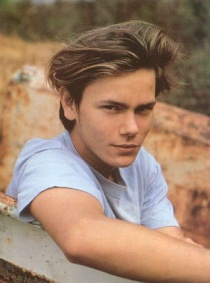A VERY PEPPY GIRL
Dick Avery (Fred Astaire) sang it right : "you
fill the air with smiles, for miles and miles and miles". Many directors
saw in Audrey Hepburn a great capacity for comedy. Paris when it Sizzles, or My
Fair Lady are examples among others of how lively Hepburn was. There was in her a mixture of an enormous love for life as well as an attraction for melancholy. None of them saw
it better that Stanley Donen and Billy Wilder.
FUNNY FACE
(1957) by Stanley Donen
This was
Hepburn and Donen’s first collaboration. Hepburn was very enthusiastic about
making her first musical and working with the legendary Fred Astaire. Unlike in
My Fair Lady, she did her own singing in the film. Her excitement is palpable
in many scenes, especially the one where she performs her contemporary dance. That
scene is quite revealing about Hepburn’s acting: the joy we see in her
character, the love for life, the generosity that exudes from her imperfect and
amateur dance… She manages to equal
Astaire in grace and lightness, when she was not a professional dancer. All of
these qualities have now become inseparable from Audrey Hepburn. And Donen
captured all of them in one beautiful sequence.
You can
find a great deal of funny moments: the girls chasing Jo to transform her into
the perfect model, the soirée with the master of Empathicalism (a formidable
Michel Auclair). The romance between Avery and Jo allows Donen to film some
splendid moments, thanks to the help of Richard Avedon, on whom the character
of Avery is based on. Avedon did a lot of photography for the film, especially
the portrait Avery is developing when he sings “Funny Face”. These romantic
scenes also allow Donen to reveal Hepburn’s melancholy. Remember the Anna
Karenina photo shoot when it turns out that Jo doesn’t need fake tears, she’s
already crying: Jo has fallen in love with Avery.
Donen saw
how thin the line was between Hepburn’s joy and her sadness: at the end, the
tears of sorrow transform into tears of happiness in a split second. And we
have exactly the same performance from Hepburn at the end of Love in the
Afternoon, which she shot back-to-back with Funny Face.
LOVE IN THE
AFTERNOON (1957) by Billy Wilder
For his
second collaboration with Hepburn, Wilder did not repeat the same mistake he
did with Sabrina. He found her a partner who, although much older (a recurrent
event in Hepburn’s career, she was always paired with much older man), was her
match. And finding your match is the whole point of Love in the Afternoon. As
always with Billy Wilder, there’s a lot of laughter involved: recurring gags
(the band playing "Fascination" every night), idiotic characters (the foolish
husband)… There’s also the traditional opposition between the philanderer and
the young ingénue. There again Wilder offers Hepburn much more than he did in
Sabrina. Ariane is neither passive nor subdued. She beats Frank Flannagan at
his own game. She makes him believe that she too has hundreds of suitors and
that, just like him, she doesn’t get attached.
Hepburn as
always displays her subtlety. What she hides from Flannagan, she lets the viewer see: how hurt she is when he fails to recognize her, her emotion when he announces
his departure… Wilder exploits her peppiness as well: her imagination goes wild
as she invents more and more crazy lovers to make the one she loves jealous.
Love in the Afternoon is a beautiful romantic comedy that is far from being
traditional.
CHARADE
(1963) by Stanley Donen
Who in all
Hollywood had the same reputation for class, seduction and handsomeness as
Hepburn? Many times, directors had tried to reunite Hepburn with Cary Grant. And
Stanley Donen was the only one who succeeded, offering us one of the best
onscreen couples ever. Donen escapes the traditional love story by turning the
female character, Regina Lampert, into the predator. She’s the one who
constantly pursues Cary Grant’s character with ardor. She tricks him into going
into her bedroom at night and kisses him whenever she can. The suspense of the
film is very well crafted, and the twists very amusing and witty. It allows Hepburn
to play on different levels: fear, suspicion, love… Donen’s clever move is to
make of Regina a strong woman, thus contrasting with Hepburn’s frailty. Regina is
stubborn and very independent. The thriller aspect of the film was so well done
that when it was released, many people thought that Hitchcock had directed the
film thus leading to the film’s famous nickname: “the best Hitchcock film that
Hitchcock never made”.
Viddy Well and see you next week for the final part of Audrey Hepburn's films.
E.C

























